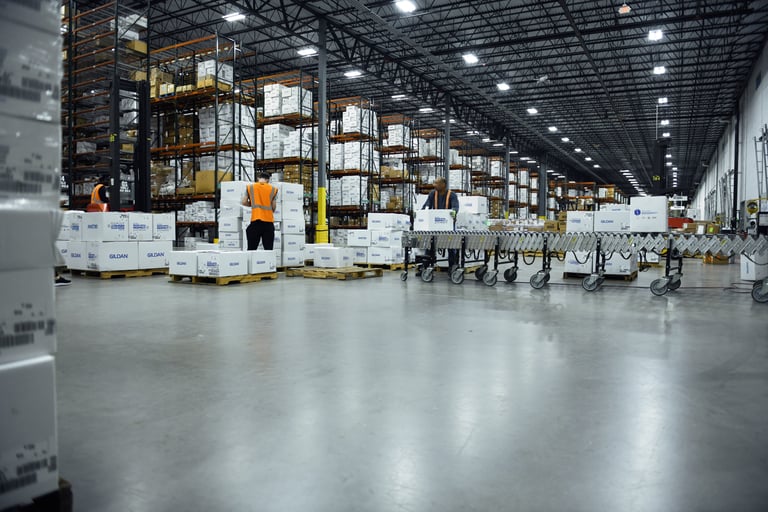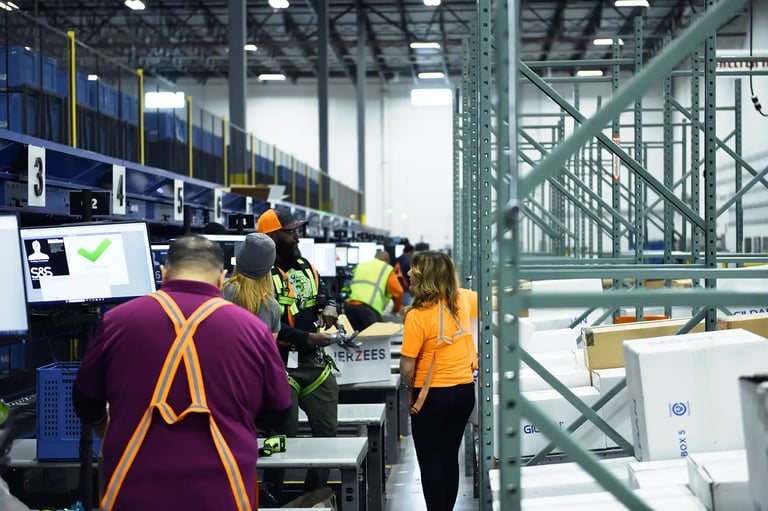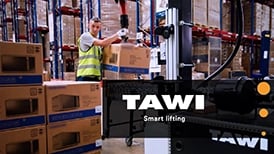The biggest logistical issues in 2025

The logistics sector is becoming increasingly intertwined with the economics, politics and environmental state of the world. These challenges faced by this industry are not merely logistical but are reflective of broader societal trends and shifts.
However, these logistical issues and challenges don’t necessarily have to escalate into problems for your business.There are strategies to manage these challenges effectively to prevent negative impacts on operations. Unsurprisingly, technology is often key.
At TAWI, we pride ourselves on being solutions builders. Over the years, we have been studying, analysing, and understanding the challenges of the logistics sector. This has enabled us to predict potential challenges that are likely to peak in the coming year. The first step to prevent a challenge from being a problem is understanding what the challenge is and why it is happening. Then comes the solutions, that is where we step in.
1. Labour Shortages: A Logistics Challenge
Year after year, the logistics sector grapples with a skills shortage, particularly in the road transport sector. This shortage creates bottlenecks, impacting supply chains and the broader logistics industry. It’s estimated that over half of European trucking companies are unable to grow due to a lack of skilled workers.
Several factors contribute to this shortage, including an ageing workforce, less interest from younger generations, Brexit, the economic impact of the pandemic, and the “Amazonification” effect, where online shopping and fast delivery expectations have increased the demand for skilled labour.

2. Infrastructure: The Backbone of Logistics
The state of Europe’s infrastructure poses a significant challenge to the logistics industry. Current road congestion results in longer, unpredictable journey times, undermining productivity and competitiveness. This underscores the need for sustained investment in road infrastructure and the wider transport networks.
Infrastructure also extends to internal warehouse infrastructure & management. Insufficient and unsuitable tools and machinery to run your facilities can create bottlenecks, delay orders, and ultimately cause logistical issues which cost businesses both their money and reputation.
We’ve written a pretty comprehensive guide to improving internal warehouse efficiencies through better infrastructure – Read here.
3. Sustainability: An Environmental Imperative
The increasing focus on environmental sustainability is both a challenge and an opportunity for the logistics industry. In March 2024, the Securities and Exchange Commission adopted rules to enhance and standardise climate-related disclosures by public companies.
The logistics industry, which accounts for just over a third of global greenhouse gas emissions, is under intense scrutiny. Businesses are exploring eco-friendly practices to reduce their environmental footprint and solve these logistical issues. This includes enhancing fuel efficiency, increasing the use of renewable energy, and implementing sustainable packaging solutions.
Changes in packaging can pose challenges in warehouses, as goods handling requires careful consideration of the packaging material to prevent damage to the goods or the packaging itself.
4. Regulatory and Compliance Changes: Staying Ahead
The regulatory landscape affecting logistics operations is continuously evolving. New laws and compliance standards emerge that businesses must adhere to. To navigate these changes, businesses should employ several strategies:
Continuous monitoring: Regularly track and review regulatory updates at both international and local levels.
Leveraging technology: Use advanced supply chain management tools that offer features for compliance management.
Training and awareness: Regularly train your staff on the latest compliance requirements and best practices.
Building flexibility: Design your logistics processes with adaptability in mind, allowing for quick adjustments in response to regulatory changes.
Logistical Issues – The Domino Effect
In the face of logistical issues, warehouses are losing momentum at a critical time when online orders are surging, and customer demands for fast delivery are soaring. Shortages in skilled workers not only cause delays but also pose risks to health and safety, particularly with the repeated strain on the body from moving heavy boxes. The existing infrastructure struggles to keep pace with escalating pressures, necessitating modifications to meet evolving demands and prevent customer dissatisfaction and warehouse risks.
Sustainable packaging adds to the complexity, potentially causing delays as workers and tools adjust to packaging changes while keeping up with regulatory shifts becomes increasingly daunting.
The wide adoption of technology, including automation, is reshaping supply chain management by enhancing transparency and facilitating the creation and sharing of supply chain information in unprecedented ways. AI and SaaS systems are being used to boost transparency within the logistics sector, allowing companies to better manage shipped goods and help mitigate blockages from occurring. However, although AI feels like the buzzword of the year, slowly being incorporated into the every day, it doesn’t necessarily help your workers speed up the handling of goods.
TAWI Solutions: Putting the Logic in Logistics Sector
At TAWI, we advocate for machine-human collaborative solutions to confront these challenges head-on. By leveraging the strengths of both humans and machines, we can revolutionise the logistics sector and mitigate looming threats. Our vacuum lifters alleviate the burden on workers’ bodies’ by up to 80%, enhancing warehouse safety by reducing injuries and fatigue associated with manual lifting. With our products, businesses can mitigate risks, protect workers, and safeguard their reputations.
Our vacuum lifters do not tire like human workers, meaning our solutions consistently outperform manual lifting, especially over the course of a day when workers begin to fatigue. As our lifters handle the heavy lifting and your workers operate the machinery, this opens up opportunities for workforce diversification, addressing labour shortages effectively.
Flexible Solutions – the Key to Facing Logistical Issues
We have engineered a solution that evolves with the industry. Our vacuum lifters have different attachments to accommodate the materials being handled, ensuring no marks are left. This includes adapting to changes in packaging brought about by sustainable initiatives.
With our machines handling the heavy lifting, staff are freed up, allowing them to be redirected to other areas of the warehouse, including staying on the ball with regulation changes. This ensures you are never behind and at risk of breaching new rules.
The shipping and logistics industry is swiftly embracing technologies and bolstering resilience in the face of ongoing uncertainty
Strategies such as real-time visibility, human-machine collaboration, and sustainability initiatives are being employed to future-proof businesses and thrive in a dynamic environment. At TAWI, we are at the forefront of changing the future narrative of the supply chain, creating an industry alleviated of delays, damage and disruption.
There’s no one way to resolve all these logistical issues, but we can offer you a way to improve efficiency within warehousing logistics, download our guide.
